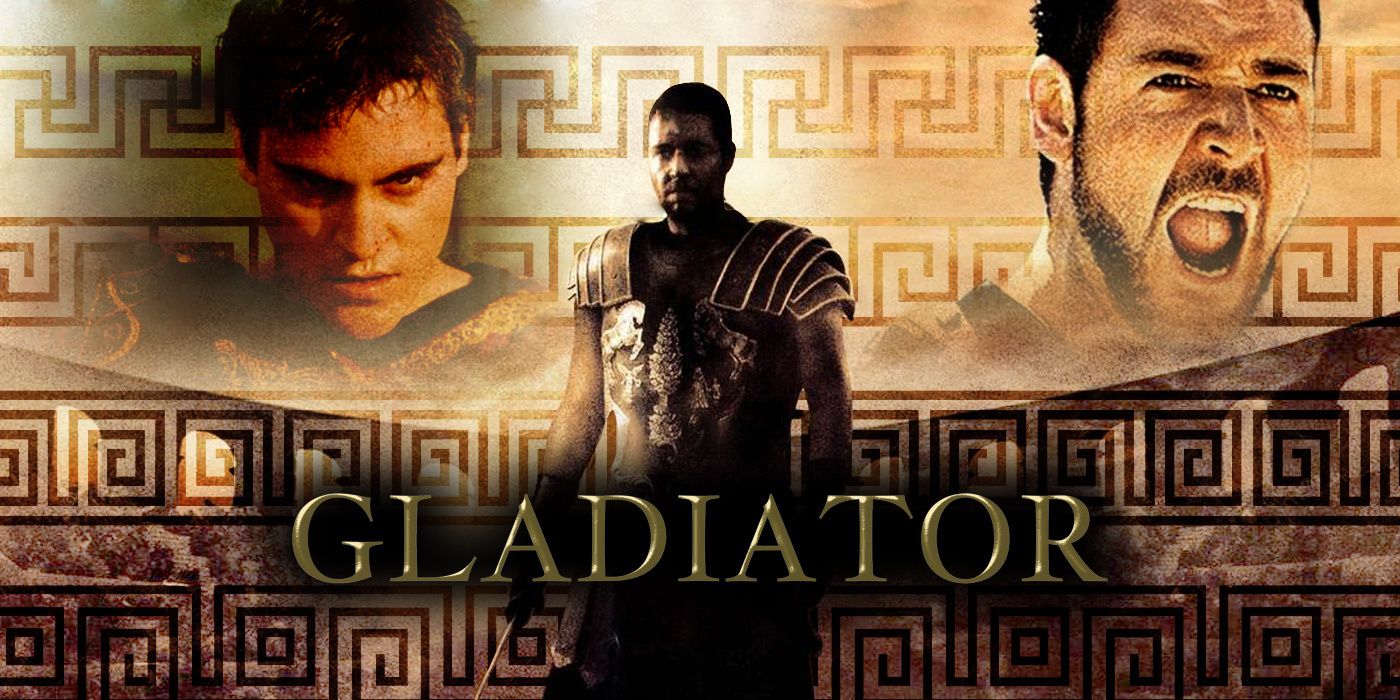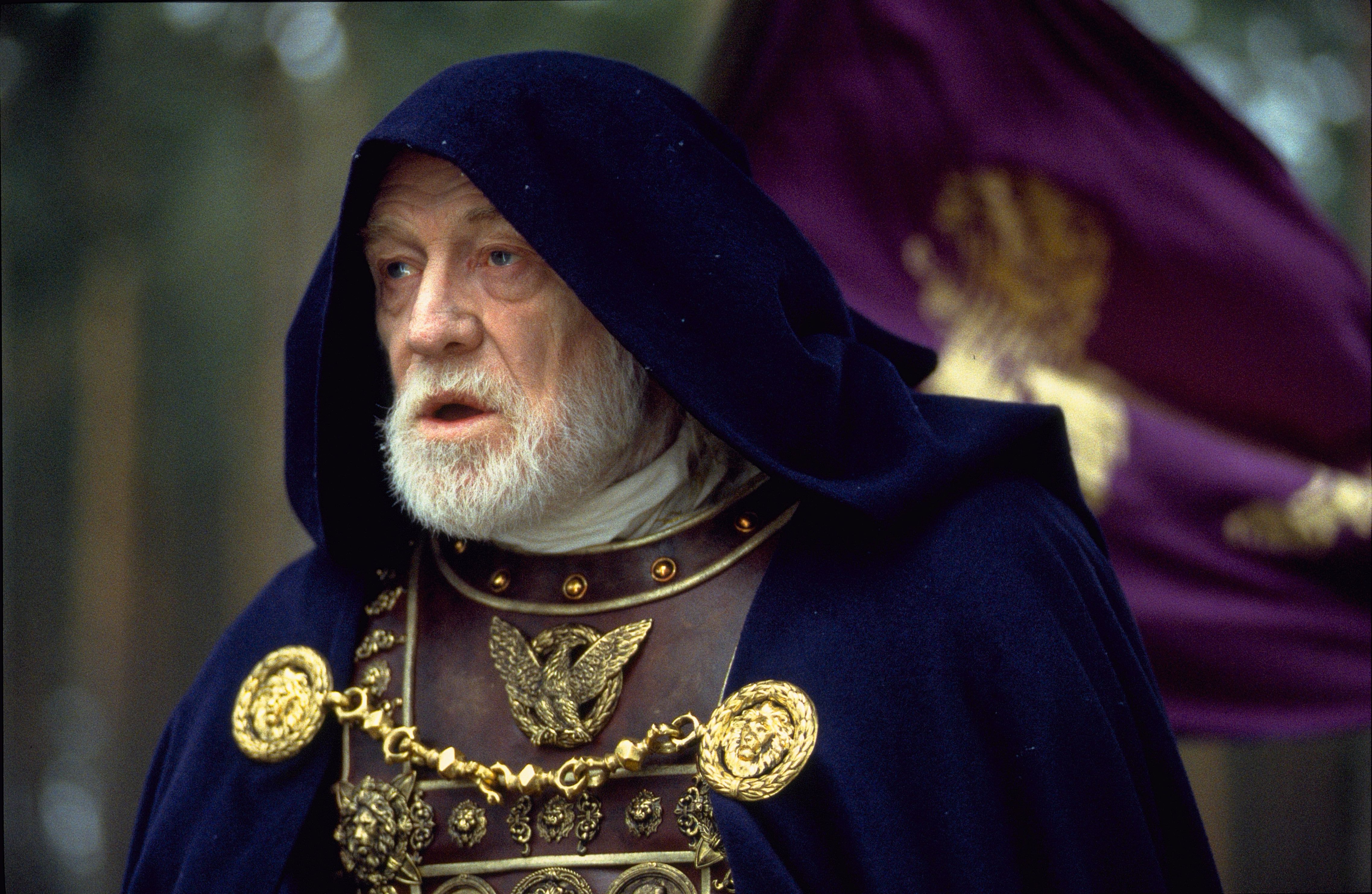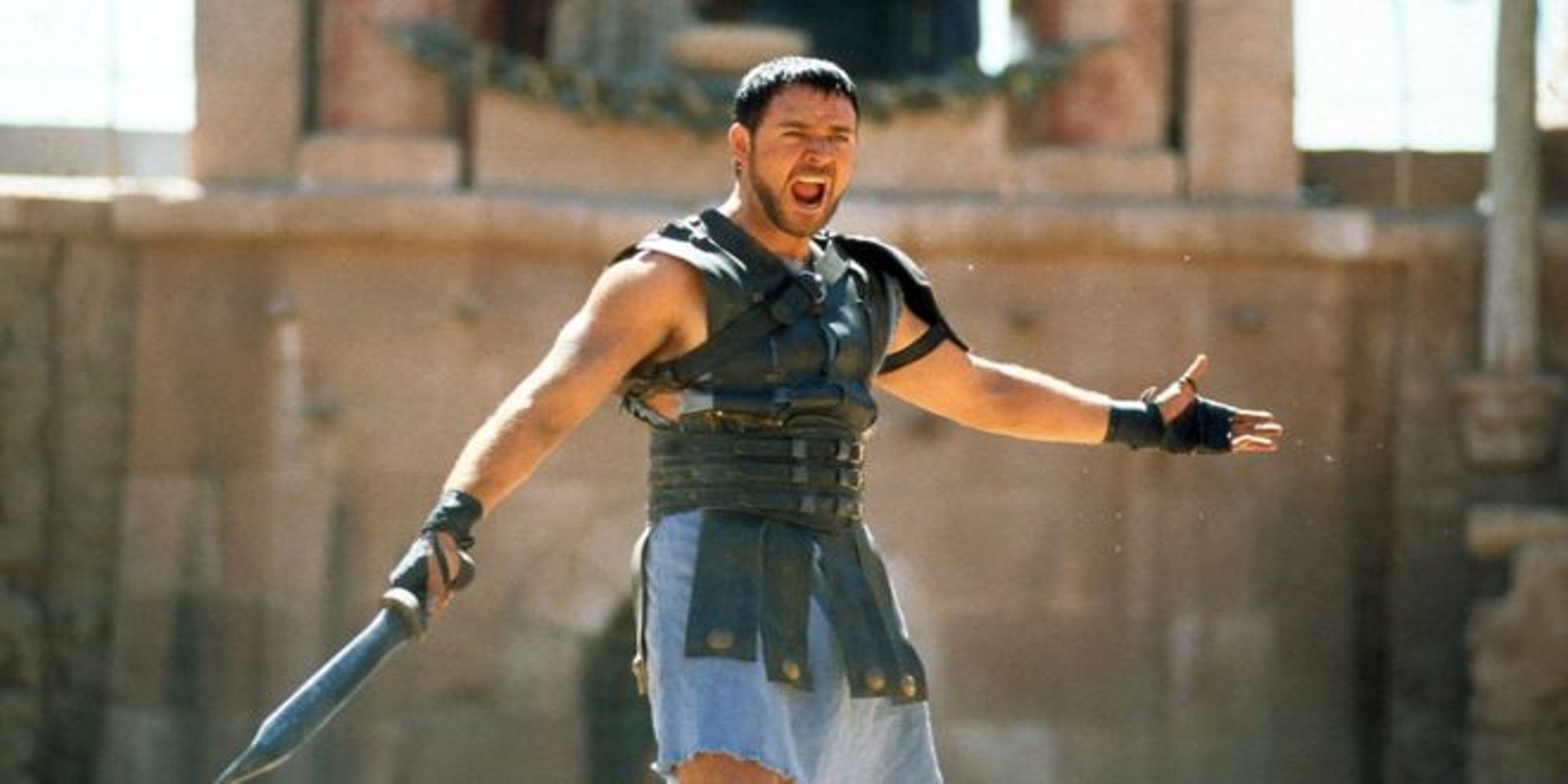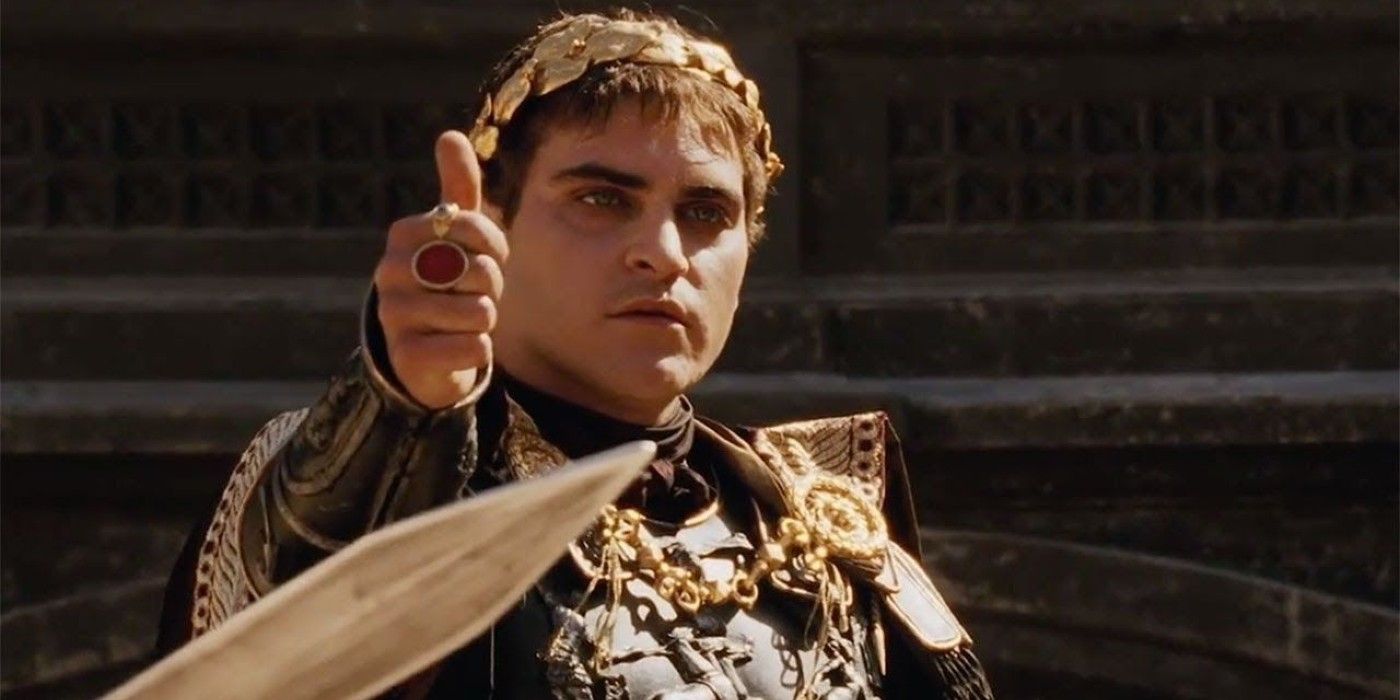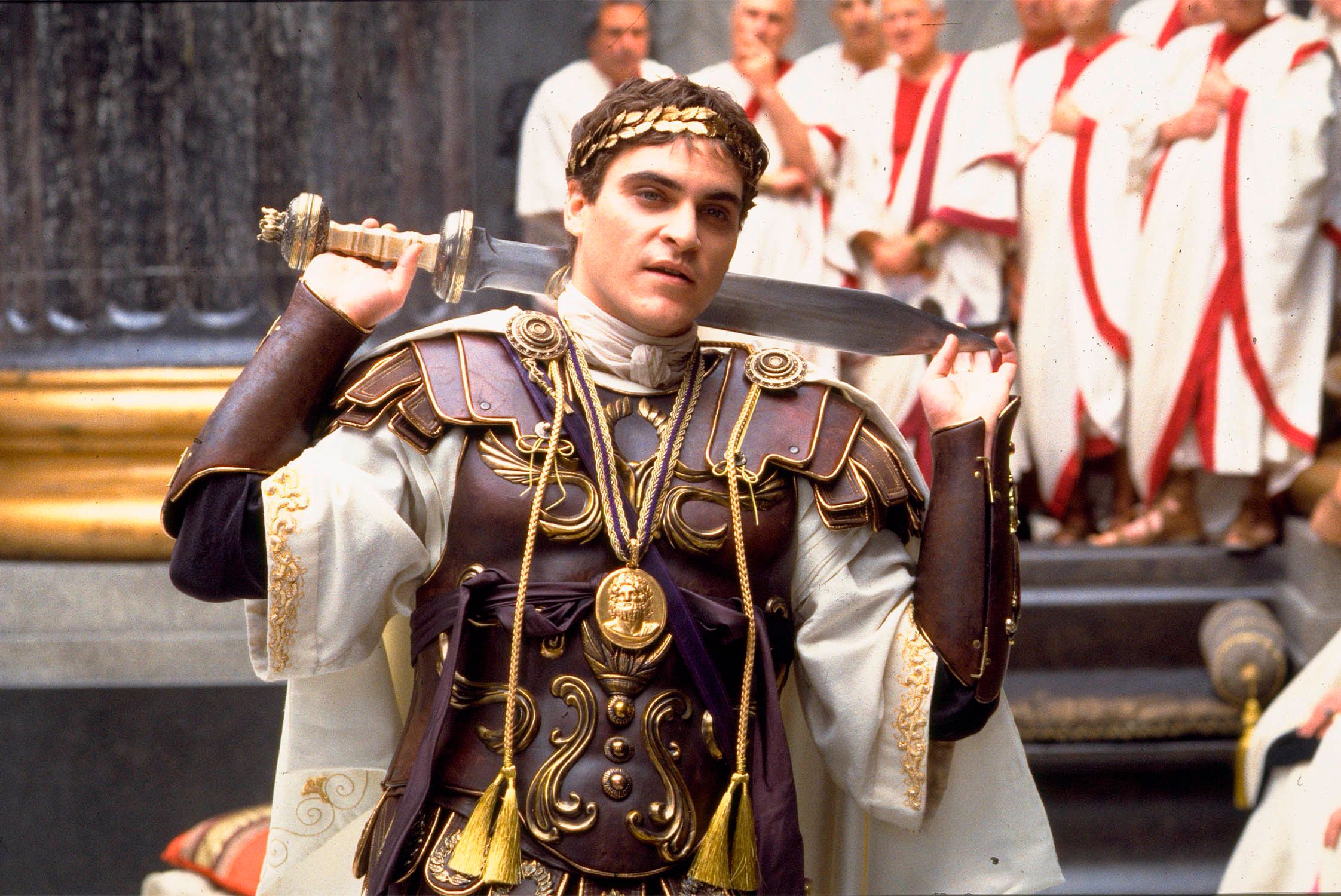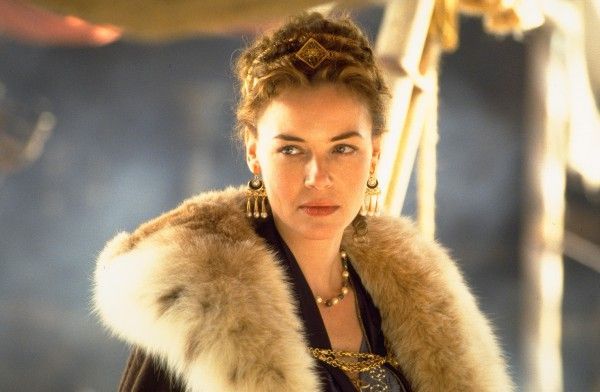There has been a long-standing fascination of filmmakers for the world and society of ancient Rome, and this interest led to many classics of the silver screen in Hollywood’s Golden Age. From Biblical Epics to films like Ben-Hur, the awe-inspiring scale of Rome’s impact on the ancient world was a continual source of inspiration for the grand spectacle that they could provide.
This fascination with Rome and the “sword and sandals” type of movie seems to have died off with the Hollywood Golden Age itself, but an outlier in that regard is Ridley Scott’s Best Picture-winning Gladiator (2000). It was one of those rare films that won accolades both at the box office and on the awards circuit, racking up five Oscars and finishing as the second highest-grossing movie of the year.
The story of the disgraced Roman general traveling the path of vengeance against the most powerful man in the empire struck a chord with audiences, and at least momentarily brought the fascination with the ancient epic back to the big screen, as movies like Alexander and Troy later tried to replicate Gladiator’s success. It has had such a long-standing impact that Ridley Scott himself has even decided to come back to the Gladiator story.
As with any fascinating historical film, the success it gained with critics and audiences often leads to a more common interest in its source material. Especially for a movie focusing on Roman politics and the lives of emperors and slaves, a question naturally arises: just how historically accurate is it?
To help answer that question, here are five of the key elements of the story and their historical precedents.
1. Marcus Aurelius
One of the things that the film followed fairly accurately was the broad-strokes history of the time period, at least when it came to imperial succession. Marcus Aurelius was succeeded as emperor by his son Commodus, who ushered in a far more corrupt rule than the one that preceded him. Marcus Aurelius himself was a prolific writer and Stoic philosopher who ruled the empire as justly as could be expected, and Commodus took an unwelcome turn from the competent rulership of his father.
However…
While there are many things the movie gets right about Marcus Aurelius and Commodus, one of the key points in the plot runs in serious contradiction to the actual history. While the film has Commodus contravene his father’s last wishes and murder him in order to avoid being passed over for emperor in favor of Maximus, the true story is less dramatic and more depressing.
Aurelius himself was the last of what are called the “Five Good Emperors,” whose reigns marked the peak of the prosperity and stability of the Roman Empire. The lineup of Nerva, Trajan, Hadrian, Antoninus Pius, and Marcus Aurelius not only made for almost a century of imperial prosperity, but also would have been a killer lineup of names for an awesome heavy metal band.
One of the reasons for their success, though, was that none of those emperors passed on imperial authority to a natural-born son, choosing instead to give the office to a man who had established himself as a competent ruler — until Marcus Aurelius. Aurelius actually gave the empire to Commodus despite the mountain of evidence telling him that Commodus was about as likely to successfully operate a lunar module as he would an empire. Marcus Aurelius, as he grew older, gave more and more power to his utterly inept son, and clearly never intended to suddenly hand power off to someone else.
2. Maximus
The central character of Gladiator is the disgraced general Maximus Decimus Meridius (Russell Crowe) who fights his way up through the ranks of gladiators to capture the hearts of the Roman crowd and threaten the emperor who tried to destroy him in the first place. He nearly leads an insurrection against Commodus and ultimately kills the hated emperor before dying of his wounds himself.
The historical precedent for the character of Maximus is not nearly as apparent as Marcus Aurelius and Commodus. There was no Maximus who challenged the emperor or led the Roman legions in the same context as Russell Crowe’s character. However, that does not mean that he was entirely fictional.
Maximus fits into the role of a number of ancient heroes of Roman history and myth, while not exactly copying any of them. In many ways he fits the type of the incorruptibly moral ancient Roman general Cincinnatus, who according to tradition was granted dictatorial power by Rome during a time of crisis. He was given a term of six months, and news of his appointment reached him while he was plowing his fields. He left the plow, saved the Roman Republic in a manner of days, immediately gave up power, and returned to his farm.
Another more directly historical parallel to Maximus is the general Clodius Albinus. He was a contemporary of Commodus stationed in the province of Britannia who stood up to the excesses of the emperor and decried the fact that all power was given to the emperor rather than the senate and people. He rose as a rival to Commodus and ended up engaging in a massive battle with the succeeding emperor, Septimius Severus, over the fate of the empire, in which he was unfortunately defeated.
3. Commodus in the Arena
Commodus in history as in the film was a far cry from his respected father, and did no great service to his reputation in the way he behaved in public or in private. He departed in many unfortunate ways from the Five Good Emperors: he created a personality cult where he was worshipped as a god, he ritually renamed Rome “Commodiana,” and he renamed every single month of the Roman calendar after his own titles (unfortunately somehow without naming any of them “megalomania”).
Perhaps his most unbecoming habit, however, was his appearances in the Colosseum. What plays out in the movie as the climactic decision of Commodus to fight Maximus in the arena was actually a depressingly common occurrence. Commodus loved to appear as a gladiator in fights that were fixed beforehand in one way or another, and wounding his opponents before the fight as happens in the movie was not out of the question. He also killed wild animals and beat cripples to death, for which he, as emperor, charged Rome a million sesterces for every appearance. As gladiatorial shows generally involved slaves and criminals, this was seen as inappropriate for anyone of the upper class, and especially for an emperor.
4. Commodus’ Death
While Joaquin Phoenix’s depiction of Commodus was certainly in line with the self-obsessed emperor of the historical record, his death was notably different than the one shown in the film. What really happened was that a number of powerful people, figuring out that Commodus planned to adorn his garden with their severed heads, decided that they were rather attached to them and weren’t all too keen on serving as the main course in Commodus’ version of “The Red Wedding.”
To save their skins, these men successfully bribed Commodus’ wrestling coach, a gladiator named Narcissus, to strangle the emperor in his bath, which he successfully accomplished. Ridley Scott tweaked the ending of the movie halfway through production, but wisely chose against including this scene, seeing as a pair of naked men slipping and thrashing about in a bath is not quite as dramatic as the ending audiences actually got to see.
5. The Fate of the Republic
While Rome attempted to readjust after the death of Commodus, the result of his reign was not nearly as hopeful as the movie would have you believe. Rome never went back to being a Republic, as Marcus Aurelius of the movie seemed to intend; the slight possibility of re-establishing that balance died with the failure of Clodius Albinus in the years after Commodus’ death.
The senate declared a “Damnatio Memoriae” on Commodus, meaning that they destroyed all statues and images of the emperor, but Rome was in for a tough time. There was massive political upheaval after Commodus’ death, and there were five emperors who ruled Rome in the next year alone. Ultimately, the rule of the emperors continued for centuries after.
Perhaps the greatest strength of Gladiator is in the way that it plays with the sorts of ideas and stories that occur in the history of Rome itself. While not a direct historical adaptation by any means, the movie is full of elements of Roman history and myth that weave a web of plausibility throughout the story and strengthen its themes and ideas thereby. History may not have happened in the way the movie presents it, but the story itself is one made out of some of the most significant stories that the Romans themselves would have known and loved. Legend and history are intertwined, and the success of the film is a testament that the idea was a winning formula.

